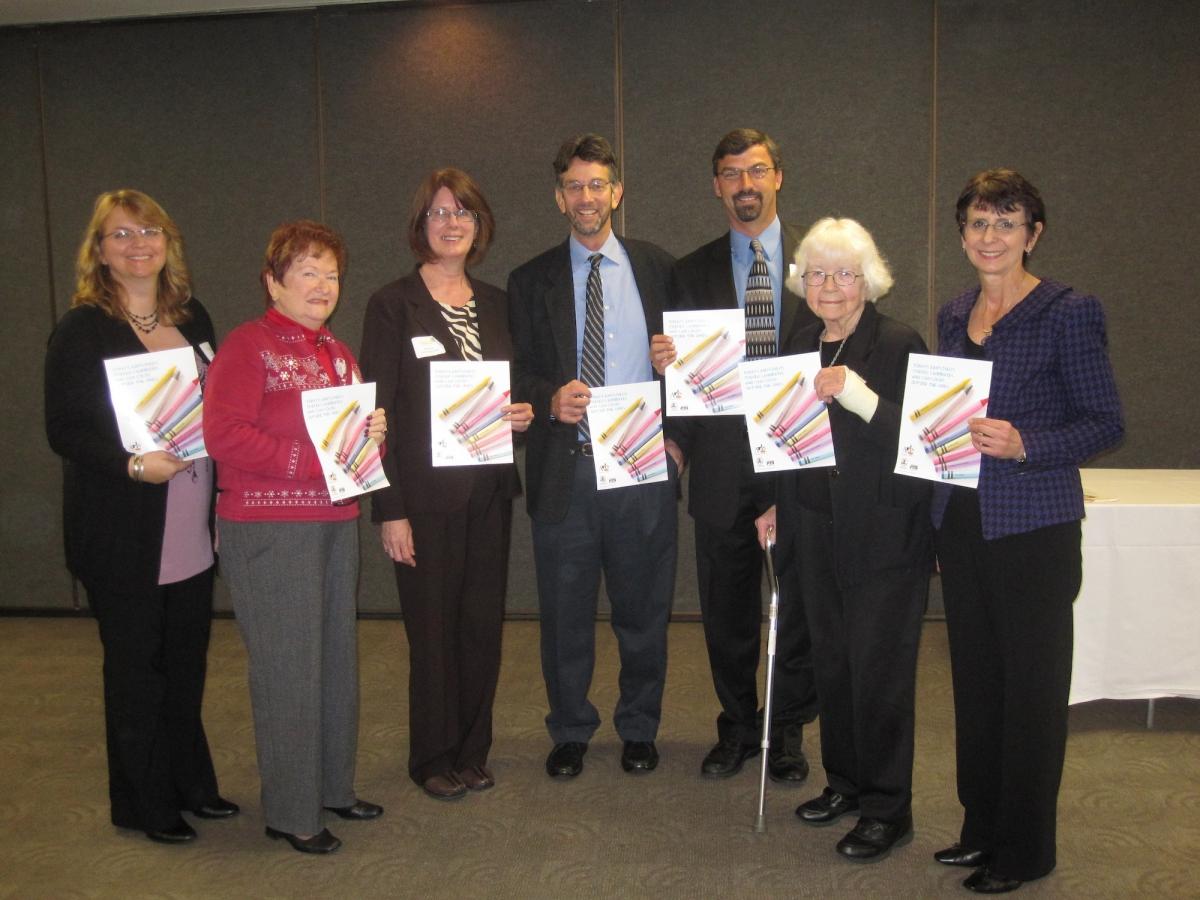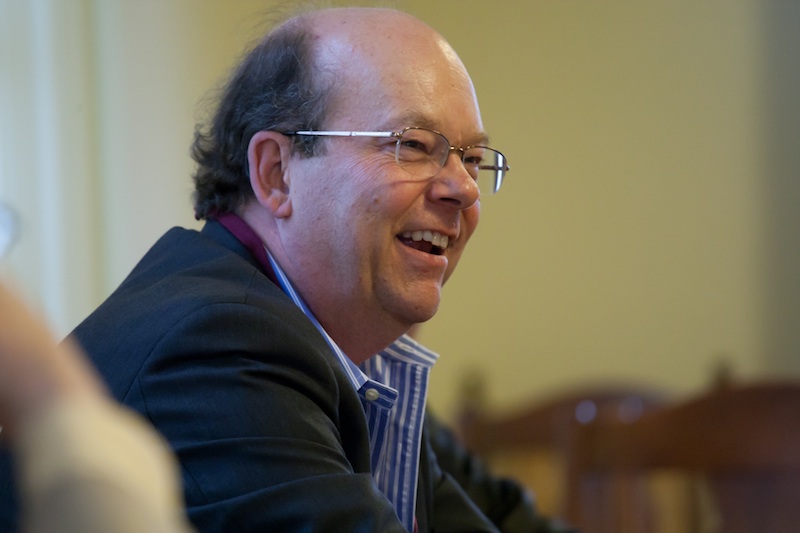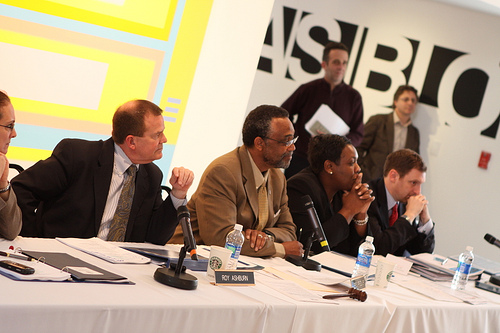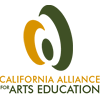CAAE blog archive is located here.
2012
 In a recent interview with for California Schools, a monthly magazine of the California School Boards Association, Joe Landon reflects on what's working in the Alliance's Local Advocacy Network. Launched in 2008, the program empowers local communities to keep arts programs in schools.
In a recent interview with for California Schools, a monthly magazine of the California School Boards Association, Joe Landon reflects on what's working in the Alliance's Local Advocacy Network. Launched in 2008, the program empowers local communities to keep arts programs in schools.
The Alliance provides local groups the leadership development, strategic assistance and online resources and communication tools they need to make effective school board presentations, earn media coverage of their issue and, this year, complete an arts education survey of candidates running for school board in forty California districts.
Four years into the program, Landon cites strong partnerships with what are often sympathetic local school boards as key to the local coalitions' success. "They approach school board members as partners. They have a clear, consistent message, and they bring solutions rather than complaints."
Landon also explains what's keeping local districts from using Title 1 funding for arts education and what the Alliance is doing to help.
...
 Democracy is slow—it is a world of the tortoise, not the hare. The language to describe legislative steps—“sent to Committee,” “the committee took action,” or “adopted and engrossed”—seem to imply efficiency, celerity, and progress. However, in Massachusetts, a legislative clerk must still physically carry the printed legislation down the hall and lay it on the Governor’s desk. Legislation is a cumbersome process often dismissed with the adage: “Two things you should never watch being made: sausage and the law.”
Democracy is slow—it is a world of the tortoise, not the hare. The language to describe legislative steps—“sent to Committee,” “the committee took action,” or “adopted and engrossed”—seem to imply efficiency, celerity, and progress. However, in Massachusetts, a legislative clerk must still physically carry the printed legislation down the hall and lay it on the Governor’s desk. Legislation is a cumbersome process often dismissed with the adage: “Two things you should never watch being made: sausage and the law.”
...
 In their work to uncover new, sustainable biofuels, The Boeing Company relies on the creativity of its workforce. Innovators at Boeing have identified algae as a possible biofuel that could lower carbon emissions for airplanes. That’s one reason why Sarah Murr, a Global Corporate Citizenship Community Investor for Boeing and a Board Member of the California Alliance, travelled to Sacramento to speak to lawmakers about the importance of a creative workforce - not only for companies like Boeing, but for the future of our state in the global economy.
In their work to uncover new, sustainable biofuels, The Boeing Company relies on the creativity of its workforce. Innovators at Boeing have identified algae as a possible biofuel that could lower carbon emissions for airplanes. That’s one reason why Sarah Murr, a Global Corporate Citizenship Community Investor for Boeing and a Board Member of the California Alliance, travelled to Sacramento to speak to lawmakers about the importance of a creative workforce - not only for companies like Boeing, but for the future of our state in the global economy.
“The challenge is that we have a skills shortage not a labor shortage -- especially with unemployment rates where they are,” says Murr, “We have a shortage of people with the skills for the jobs that are needed in an increasingly dynamic and competitive marketplace.” Murr delivered her message at a hearing before the Joint Committee on the Arts organized by Senator Curren Price and in sit down meetings with key legislators and members of the Governor’s staff arranged by the California Alliance.
According to Murr, “...
On April 18, Senator Curren Price, chairman of the Joint Committee on the Arts, convened a hearing titled The Arts, Creativity, and Innovation in the 21st Century Classroom: How to Paint a Canvas for Success.
Experts from the field presented information on the value of creativity and the arts and explored the ways we can provide opportunities for innovation and creativity to flourish in California classrooms.
Sarah Murr, Community Investor for The Boeing Company and California Alliance Board Member, offered testimony about preparing students with the creativity skills they need to succeed in the 21st century economy. Read her testimony. ...

A new study released by the National Endowment for the Arts, The Arts and Achievment in At-Risk Youth: Findings from Four Longituinal Studies, examines the academic and civic behavior outcomes of teenagers and young adults who have engaged deeply with the arts in or out of school.
According to the research, "teenagers and young adults of low socioeconomic status (SES) who have a history of in-depth arts involvement show better academic outcomes than do low-SES youth who have less arts involvement. They earn better grades and demonstrate higher rates of college enrollment and attainment."
Specifically, students low income students with access to an arts rich curriculum are more to:
- Achieve higher GPAs and test scores
- Graduate from high school and attend college
- To read the newspaper, volunteer and vote
 The National Endowment for the Arts has released a new research report, Improving the Assessment of Student Learning in the Arts: State of the Field and Recommendations. As the field of educational assessment advances, and as alternatives to standardized tests emerge, the tools used to evaluate student learning, such as portfolio reviews, are beginning to gain acceptance. Given this development, it is even more important to examine arts educational standards and assessment tools to ensure that arts learning can become a vital force for enhancing 21st century skills. Read the report.
The National Endowment for the Arts has released a new research report, Improving the Assessment of Student Learning in the Arts: State of the Field and Recommendations. As the field of educational assessment advances, and as alternatives to standardized tests emerge, the tools used to evaluate student learning, such as portfolio reviews, are beginning to gain acceptance. Given this development, it is even more important to examine arts educational standards and assessment tools to ensure that arts learning can become a vital force for enhancing 21st century skills. Read the report.
 Right now, California is one of a handful of states that has resisted using federal Title 1 funds for arts education.
Right now, California is one of a handful of states that has resisted using federal Title 1 funds for arts education.
Despite evidence that arts education contributes to lower drop out rates and higher academic achievement, which are the stated goals of the Title 1 program, California education leadership has failed to support Title 1 funding for arts education and at-risk students in our state are going without.
Read California Alliance for Arts Education Executive Director Joe Landon’s letter to the editor to learn more.
 According to John Eger's newest blog in the Huffington Post, "Clearly something big is happening across America" and that something is creativity. Next week, arts education stakeholders from all over California will gather in Coronado to talk about "how the arts and creative education can transform California classrooms." Next month, the California Legislative Joint Committee on the Arts will hold hearings on SB 789, legislation that will require the Governor to develop a "creativity index," which in turn would be used to measure creativity in public schools statewide. SB 789 was authored by Senator Curren Price of the 26th Senatorial District and sponsored by the California Alliance.
According to John Eger's newest blog in the Huffington Post, "Clearly something big is happening across America" and that something is creativity. Next week, arts education stakeholders from all over California will gather in Coronado to talk about "how the arts and creative education can transform California classrooms." Next month, the California Legislative Joint Committee on the Arts will hold hearings on SB 789, legislation that will require the Governor to develop a "creativity index," which in turn would be used to measure creativity in public schools statewide. SB 789 was authored by Senator Curren Price of the 26th Senatorial District and sponsored by the California Alliance.
According to Eger, "this movement by California matches the legislation signed by the governor of Massachusetts last spring, and is much like a bill working its way through the state legislature in Oklahoma to also establish a creativity index. Equally significant, Maine, Connecticut, New York, Rhode Island, Colorado and Wisconsin are beginning similar discussions and Nebraska is getting itself organized." ...
The Challenge: How do you connect with parents across a large, rural county with twenty-three separate school districts?
The Strategy: Invite parents to an event featuring resources for advocacy and a free night of theater.
The Story: When the Stanislaus Alliance for Arts Education launched last fall, it was clear that parents were key to preserving or expanding arts education in Stanislaus schools.
“We saw right away that the districts that had arts programs were the ones where parents were involved -- through booster clubs, PTAs or education foundations,” says Patty Larrick, the local organizer for the Stanislaus Alliance. “Our challenge was to bring all these different groups together, in order to share best practices and coordinate efforts.”
The Alliance team decided that the best way to spark countywide participation was...












